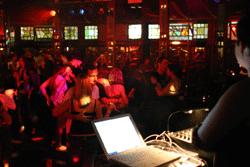 I also played a set at the Spiegeltent during MLX. It was very exciting – a well paid gig, where I finally had the chance to play kicking lindy hop songs for a kicking lindy hop crowd. I was also lucky enough to share the set with Trev (thank the goddess for his generousity – I’d never have made it through three and a half hours on my own that night).
I also played a set at the Spiegeltent during MLX. It was very exciting – a well paid gig, where I finally had the chance to play kicking lindy hop songs for a kicking lindy hop crowd. I was also lucky enough to share the set with Trev (thank the goddess for his generousity – I’d never have made it through three and a half hours on my own that night).
So the set was a combination of ‘crazy exchange lindy’ (dancers at exchanges are notoriously? famously? infamously? enthusiastic and open minded about music (compared to when they’re at home)), Trev-inspired old school lindy stuff (ie things I dig but don’t get to play very often here in my regular gigs), stuff that’s just plain old good fun and a few other odds and ends.
It was an interesting set because I had to move from the disco/funk they were playing on the house stereo (I loath nasty transitions), allow for the juggling performance (I regret not getting the energy up before his act so I could get the crowd in the mood), take into account the fact that many of the lindy hoppers would be tired from the previous gig where (for example) Trev DJed an awesome set – the Gangbusters bracket where his tempos averaged 180 – 200 bpm. That’s frickin’ fast. And it was frickin’ fun. I also had to take into account the fact that there were lots of non-dancers jiggling about on the dance floor.
There are a few rules for DJing at the Spiegeltent (so I’ve noticed):
1. Saucy = bad idea. The punters just feel uncomfortable. The guys don’t dance, the girls feel silly.
2. Food songs = fun. Kids love them. Adults love them.
3. Upenergy = go. It’s a fun place, so the energy needs to be fun.
The below list is the set I played that night. I started off with some unswing to segue into my set, then played some ‘necrophiliac blues’ because I wasn’t sure how to get to the main lindy hopping event and was kind of finding my groove (I’m also a bit out of practice). In retrospect, I should have gotten the bpms up higher earlier.
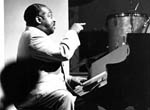 There were a few bits that I really liked – the shift from Shouting Blues (1949) by Basie to Ridin’ on the L&N by Hamp (1946) to Vine Street Boogie (1941) by Jay McShann (extra meaningful in light of his recent death) was really pleasing. Basie has a kicking rhythm section, of course at the piano himself.
There were a few bits that I really liked – the shift from Shouting Blues (1949) by Basie to Ridin’ on the L&N by Hamp (1946) to Vine Street Boogie (1941) by Jay McShann (extra meaningful in light of his recent death) was really pleasing. Basie has a kicking rhythm section, of course at the piano himself. 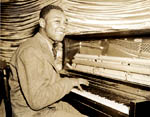 Ridin’ on the L&N has a really chunking piano/base/percussion section (of course – this is Hamp), but it really sounds like a train chunking along the track. The vocals (with funny ‘uh-oh, is that a train at the other end of the tunnel?’ stories) are typically Hamp-humour. And of course, the McShann boogiewoogie (slower than uberboogie, but with a nice chunker piano sound) brings us back to Kansas (where Basie got his first go), and had that nice, heavy base feeling, but with the lighter, move-yo-feet! feel that I really like.
Ridin’ on the L&N has a really chunking piano/base/percussion section (of course – this is Hamp), but it really sounds like a train chunking along the track. The vocals (with funny ‘uh-oh, is that a train at the other end of the tunnel?’ stories) are typically Hamp-humour. And of course, the McShann boogiewoogie (slower than uberboogie, but with a nice chunker piano sound) brings us back to Kansas (where Basie got his first go), and had that nice, heavy base feeling, but with the lighter, move-yo-feet! feel that I really like.  I’m a bit over Lavender Coffin, the ‘gospel’ track which followed, but it had the right funny-dark-humour feel I like. The Witherspoon track was a bit of a stylistic jump (to a bit of hi-fi, power-groove), but it seemed appropriate, as Witherspoon (most sexist man
I’m a bit over Lavender Coffin, the ‘gospel’ track which followed, but it had the right funny-dark-humour feel I like. The Witherspoon track was a bit of a stylistic jump (to a bit of hi-fi, power-groove), but it seemed appropriate, as Witherspoon (most sexist man alive dead) got his start with McShann. It’s also a great energy upper, and I thought that we’d gotten a bit low-tempo there with those other songs.
I quite like playing that version of A Smo-o-oth One by Cab Calloway because it has no vocals and people always ask me who it’s by. The most common version of that song is one by Benny Goodman (1941) which sits on 126bpm, is nice, but kind of draggy. There’s also a version by Junior Mance (not sure of the year, sorry), which is 125bpm and a big groover song – meaning, kind of dull. I like the Calloway version (181bpm, again I’m not sure of the year, sorry – stupid compilations) because it’s great fun for dancing and pretty punchy.
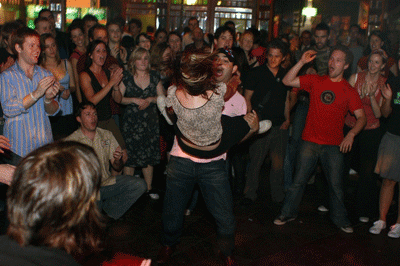
Overall, I was happy with the set, especially with the fact that I played my first ‘jam’ – Jumpin’ at the Woodside. The energy just felt high and good, and I just wanted to hear that song. The generally higher tempos feel of the night generally (and Trev’s influence) helped me take the risk. And of course, I should have realised that such an iconic track would get the kids jammin’. I deliberately chose the later era Basie recording (1960), from The Count Basie Story  (where he re-recorded the seminal hits from his earlier band with his ‘new testament’ (and arguably better) late testament band) because the quality is sweet. The song before was hi-fi, and I thought a nice, clear hi-fi recording would work best in this situation.
(where he re-recorded the seminal hits from his earlier band with his ‘new testament’ (and arguably better) late testament band) because the quality is sweet. The song before was hi-fi, and I thought a nice, clear hi-fi recording would work best in this situation.
Unfortunately, the base-controlling thingy on the sound desk (which automatically cuts in when the base gets too high, lowers the volume, then slowly lets it back up over a few seconds) cut in near the end and the volume was crappily low. But it meant that I could just move from that to a new, non-jam song without flogging a dead horse. It was a really fun jam, actually, and The Squeeze caught a few amazing photos.
So here’s the set list:
(title-artist-bpm-year-album)
Think-Aretha Franklin-109-Greatest Hits – Disc 1
Please Please Please-James Brown-74-1991-Sex Machine
Hamp’s Salty Blues-Lionel Hampton and His Quartet-86-1946-Lionel Hampton Story 3: Hey! Ba-Ba-Re-Bop
Amtrak Blues-Alberta Hunter-95-1978-Amtrak Blues
Why Don’t You Right-Jonathan Stout And His Campus Five Featuring Hilary Alexander-118-2004
St. James Infirmary-Hot Lips Page and his Orchestra-122-1949-Jump For Joy!
Minnie The Moocher-Cab Calloway and His Orchestra-112-1931-The Early Years 1930-1934 Disc A
Every Day I Have The Blues-Count Basie-116-1959-Breakfast Dance And Barbecue
Drinkin’ Wine Spo-Dee-O-Dee-Lionel Hampton and His Orchestra-130-1949-Lionel Hampton Story 4: Midnight Sun
Flying Home-Lionel Hampton and His Orchestra-159-1940-Tempo And Swing
Good Queen Bess-Duke Ellington-160-1940-The Duke Ellington Centennial Edition: Complete RCA Victor Recordings (disc 10)
Stomp It Off-Jimmie Lunceford and His Orchestra-190-1934-Swingsation – Jimmie Lunceford
Squatty Roo-Duke Ellington-202-1941-The Duke Ellington Centennial Edition: Complete RCA Victor Recordings (disc 12)
A Viper’s Moan-Willie Bryant And His Orchestra-153 -Willie Bryant 1935-1936
A Smo-o-oth One-Cab Calloway-181-2000-Jungle King
For Dancers Only-Jimmie Lunceford and His Orchestra-154-1937-Swingsation – Jimmie Lunceford
Shoutin’ Blues-Count Basie and His Orchestra-148-1949-Kansas City Powerhouse
Ridin’ On The L&N-Lionel Hampton and His Quartet-170-1946-Lionel Hampton Story 3: Hey! Ba-Ba-Re-Bop
Vine Street Boogie-Jay McShann and His Orchestra-153-1941-Jumpin’ The Blues (Disc 1)
Lavender Coffin -Lionel Hampton, etc-138-1949-Lionel Hampton Story 4: Midnight Sun
Good Rockin’ Tonight-Jimmy Witherspoon-155-1998-Jazz Me Blues: the Best of Jimmy Witherspoon
Jumpin’ At The Woodside-Count Basie and His Orchestra-278-1960-The Count Basie Story (Disc 1)
Sent For You Yesterday-Count Basie and His Orchestra with Joe Williams-163-1960-The Count Basie Story (Disc 2)
Apollo Jump-Lucky Millinder-143-Apollo Jump
Savoy Blues-Kid Ory-134-2002-Golden Greats: Greatest Dixieland Jazz Disc 3
Are You Hep To The Jive?-Cab Calloway-160-1994-Are You Hep To The Jive?
…I have to admit. I did play that bluesier stuff hoping to see a couple of the prissy lindy purists dance de olden dayes blues dancing. Ain’t nothing finer than the power of the Pad o Plastic. I really feel that you can’t dance lindy with any sort of serious cred if don’t also know the blues with your body as well – the sort of blues that was getting around at the same time as this uptempo ‘lindy’ music.
And some lindy hoppers are just so precious.
Category Archives: lindy hop and other dances
crazed and manic jubilation
I just found out that my thesis was passed WITHOUT CORRECTIONS!!
I have done the crazy happy dance about 10 times already (lots of high kicks up into the air, a few twirly spin-arounds, some random jiggling).
If I hurry I can do the graduation thing in March/April.
So I am now Dr dogpossum (mostly)! Hoorah!
…remind me to write about the dance conference, will you? I met some lovely (and awe-inspiring) young dancers who work with companies like Bangarra (and how did I introduce myself? “You guys rock!” – I am all about cool. But they did – their mini-performance blew me away!), networked like a crazy person, discovered someone who has Graybags for a supes (and knows Galaxy), told some inappropriate jokes, shared Frida and the Whitey’s Lindy Hoppers with a bunch of doods who understood what I’ve been trying to say about them and ate some of the best conference food EVER.
[and hoorah for the markers – the thesis was sent to them at the end of September, and they had the marks to me by today – that’s under 3 months turnaround time]
a few preliminary mlx thoughts – djing
I’ve had a very busy week – from Wednesday last week til yesterday… well, let’s count today as well.
Firstly, we had three lovely houseguests arrive on Wednesday evening, an arrival we celebrated with a fairly extensive barbeque dinner.
Thursday, the MLX began, with a volunteer meeting at 7.30pm, continuing with a free dance at our local venue CBD and rounding up with a gig at the Spiegeltent DJed by myself and Trev. From there the weekend continued at a frenetic pace (suddenly, I can’t seem to spell that word). Our last guest departed this morning at 5am, and I’ve spent the last couple of days lying in bed trying to be well. I have caught that horrible cold again and am pretty well crook. It’s a combination of overworking the last semester and then pushing myself to the point of destruction over the weekend.
I do have a bunch of photos to post, but they’re on The Squeeze’s computer in the other room and I can’t really be bothered sorting the network to get access to them.
I had planned to devote this post (and the following few posts) to random accounts of specific events over the weekend, but I’m so tired I’ve forgotten what I was going to write about.
But let’s start here, with a few comments on DJing (please note: these are just rough ideas and not well thought out. Nor are they representative of the mlx coordinating team – they are just some ideas that I have had).
 Right now I’m sitting here with my new headphones on, a birthday present courtesy of The Squeeze – they’re Sennheiser eh250’s for the DJ nerds amongst you. Apparently quite expensive, and certainly very excellent quality. Perfect for people who’re losing their upper range of hearing – which, apparently, we swing DJs are doing. In spades. This is something which upsets me quite a lot, as I used to have phenomenal hearing. Now I don’t. One of the perils of DJing I guess.
Right now I’m sitting here with my new headphones on, a birthday present courtesy of The Squeeze – they’re Sennheiser eh250’s for the DJ nerds amongst you. Apparently quite expensive, and certainly very excellent quality. Perfect for people who’re losing their upper range of hearing – which, apparently, we swing DJs are doing. In spades. This is something which upsets me quite a lot, as I used to have phenomenal hearing. Now I don’t. One of the perils of DJing I guess.
So I’m sitting here in bed, drowning in mucous, fighting off dizziness and tiredness (it seems silly to go back to sleep after only being awake for 5 hours) so as to record some of the weekend’s events.
I’m also trying to get back up to date with my music, seeing as how I’ve committed myself (foolishly) to DJing a set at CBD on Thursday night, and have my last gig at the Speegs this weekend.
We’d booked a number (10, actually) of the country’s best DJs for MLX, and it was fascinating to see how DJs interact at exchanges. I knew that dancers thoroughly enjoyed getting together at exchanges to ‘exchange’ dance styles through actually dancing. But watching DJs pair up at the DJ booth and exchange incredibly nerdy DJing conversations was a joy.
DJs from different cities took great delight in arriving at the DJ booth well before their set to hang out with their DJ buddy who was playing the previous set, and many of the DJs (especially those in our cafe, a venue which became home to the silliest of no-rules dancing and DJing… no-rules in that DJs could do whatever they liked, so long as they didn’t dance during their set, and saved the floor if they emptied it) took the opportunity to ‘battle’ or take turns playing songs and working cooperatively on sets, rather than adhering to the more conventional one and a half hour set turn taking.
As a cultural studies person, my imagination was immediately caught by this cooperative approach to cultural production. As a lindy hopper and cultural studies person, I was doubly attracted to this idea of partnership in creative practice. Very much in keeping with the tradition of African American vernacular jazz dance, where dancers improvise within a shared structure. Much as jazz musicians improvise within a shared, orchestrated musical structure in blues and swinging jazz.
One of my regrets from the weekend is that we couldn’t set up a webcam and do a bit of live streaming lindy action – it would have been interesting to capture the event and send it to other dancers to see their response. But there’s always next year.
I think it’s also worth noting how the weekend exemplified the variety of local DJing practices and cultures there are even within a national DJing and dancing culture. I am giving a paper on this very issue (ie the way the ‘Australian’ swing dance community is more a network of local communities and cultures than a homogenous national whole) in Canberra next week, and I couldn’t help but note how exchanges make these sorts of ideas so very clear.
We can talk at one level of the various local musical tropes – the way each local scene has a particular dominant musical and DJing culture or style. Perth (to draw a long bow), is known for its attention to historical musical accuracy. There is a greater emphasis on music from the 30s and 40s, and on a particular tempo and style of swinging jazz. Of course, the fact that we selected DJs who play within this genre went some way to constructing what amounts to a cultural myth of Perth DJing – there are certainly dancers and DJs within that community whose interests are beyond the limits of this specific genre. It is also worth pointing out that the DJs who played the MLX might also have felt that they must restrict their musical choices to this style – so as to best adhere to our expectations as organisers, and to best ‘represent’ their community.
And this point of course emphasises the role exchanges play in presenting a particular notion of ‘local’ identity and culture. A notion which is of course representative of the dominant ideology or discourse of that community (and event-organising body) rather than of the more complex and diverse whole.
I wonder if the same comments can be made of Melbourne DJs?
We offered a range of DJs over the weekend, choosing DJs who specialised in a particular area so as to best suit the room or event they were playing. We did choose two local Melbourne DJs who favoured a very ‘Perth’ musical style. Though one of these demonstrates a more diverse musical taste when DJing locally. I regret not hearing her set on the Thursday nigh, to see how she chose to play the room. Two others were representative of a very different musical style – heavy on the groove, r’n’b and late testament big band. And also representative of the musical tastes of most Melbourne lindy hoppers.
In contrast, of course, the cafe gained a reputation as an ‘alternative’ room not only through our scheduling of DJs (on the Friday night we held the now-notorious ‘BSides’ event there – where DJs were encouraged to play outside the swinging jazz genre), but also through a general, cooperative consensus about how that space was to be used. This room was decorated so as to present a more ‘friendly’ and social space, as opposed to the main room, which was very much focussed on hard-core dancing: a more effective air conditioning system, a large, clear floor, no decorations beyond the room’s basic ‘ballroom’ fixtures, and a clear musical emphasis on ‘lindy hop’. I don’t doubt that the very layout and decorations of the rooms encouraged particular musical choices from the DJs, which were, of course, a response to the mood and physical interaction of the dancers themselves.
It was interesting to see two Perth DJs generally known for their adherence to historical recreationism (both in terms of dancing and music) produce two very excellent – and quite unconvention (by their usual standards) sets in the cafe. One of whom at least took great delight in playing ‘outside the square’.
This response (which of course demonstrated the flexibility of the DJs we hired) offered an example of how DJs do respond to the room they’re playing, and realise the brief they’re given by the event coordinators. And it was a pleasure to see the DJs taking our brief and do such creative work with it. To take delight in doing something a little ‘naughty’.
Our whole ‘Hot Sides’ approach, where we offered a second room specialising in something a little outside the mainstream of lindy hopping music seemed generally very successful over the weekend. We asked Trev to play a Gangbusters set on our very first night – a room devoted to very fast tempos. A room which consequently proved to be as high-energy an event as I’ve ever seen at a lindy hop exchange. And very popular with the dancers. My only regret is that I had to leave the venue early to set up for the Spiegeltent and missed the rest of this set.
We had the BSides night on Friday, of course, which was massively successful, a point paid testament to by the locker-room stench of the room when we tidied up after it at 6.30am.
On Saturday we held the Sugar Bowl blues night – slow, saucy, sexy music for very close dancing. I’m not sure it was quite as successful as the previous night, but it was definitely a popular room and was always filled.
And on Sunday we offered a less intensely alternative bracket, but I noticed that the pattern set by the previous nights encouraged the DJs in that room to play more ‘alternative’ music, catering to the less rigorously historical recreationist crowd.
And of course, one of the nicest parts of this two-room approach was not only seeing two rooms of dancers with quite different tastes kept happy, but seeing those dancers whose tastes are less codified lurching between the two rooms to sample both styles.
As The Squeeze succinctly put it “if the song sucked in one room, I went to the other”.
I will think more about this and post again. Hopefully when I’m not so seriously high on cold and flu tablets and my own body temperature.
edit:
I judge a DJ ‘successful’ or ‘good’ when they:
– keep the floor full all the time
– can recover after clearing the floor
– work the energy of the room, using highs and lows, rather than one single ‘mood’ (ie varying the musical ‘mood’ from high energy and crazy to more mellow and moderate energy)
– respond to the crowd’s mood – if the dancers are looking to party like fools, they bring the partyfool music
I also expect a degree of professionalism from DJs at something like MLX (which had hundreds of dancers in attendance, and was really serving as a representation of Melbourne lindy culture), including:
– not dancing during their sets (something which proved controversial, and which I’ll return to later when it’s not so close an issue)
– arriving 15 minutes before their set was to begin, in order to touch base with the previous DJ
– beginning their set on-time
– having a basic understanding of the equipment they’re using – ie being able to adjust the levels and volumes in a way that makes for a more pleasurable dancing experience
These are not only my expectations, but also those of the MJDA who was running the event – we agreed on these terms before hiring our DJs.
And of course, we pay our DJs well (with better rates than other Australian events), and offer decent working conditions.
We also ask our DJs to send us a complete set list after the event so that we can forward this to APRA and pay our dues to that organisation. An interesting allusion to our stance on intellectual and creative copyright legislation.
btw
Hey homies.
I did take a lot of prep shots of the barbeque, but that was a hundred years ago, and we’ve been very very busy since. I went to bed at 4am Friday morning, then got up at 2.30 Friday afternoon, then to bed at 7.30am Saturday morning, then up at 2.30 Saturday afternoon, then to bed at 7.30am Sunday, then up at 3.30, then… ok, so I got up at 4.30 this afternoon.
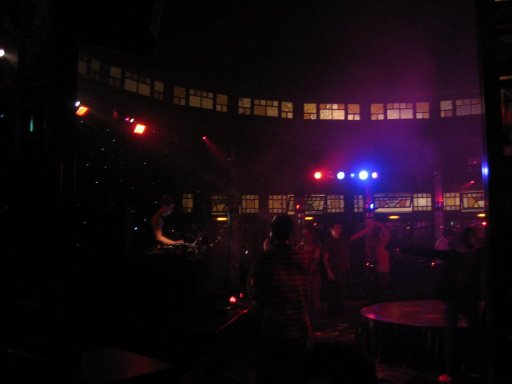
The MLX was fucking awesomely successful. We had hundreds and hundreds of dancers and DJs and everything. I will post full details in due course. Once I’ve slept more. Or perhaps in a couple of hours when the insomnia kicks in.
But to tide you over, I’ve added this photo of me DJing at the Spiegeltent (c/o Thai – thanks dood). This was taken early on in the night before the jugggling show (!) and before they took down the mini-stage. Later the floor was full of idiot lindy hoppers and drunken fools til 3am. The venue management gushed and gushed – the manager was dancing like a fool, and one of the staff came to all the MLX events over the weekend (I don’t doubt the presence of all the hawt Perth girls helped).
It was a fabulous venue and I’m there again this Saturday if you’re around town and want to catch up.
BTW the BBQ food was awesome.
this weekend’s program
Ok, so here’s the program for this MLX6 weekend:
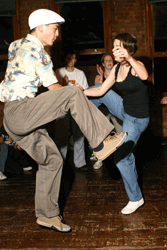
Thursday 8.30-midnight: Apollo Jump and Gangbusters, 3 dJs, 2 floors, CBD nightclub. Free.
Thursday 11.30-3am: Jumpin’ at the Spiegeltent. 2 DJs, the Amazing Spiegeltent. $5.
Friday 6.30-8.30. Welcome Drinks, Holliava Bar, Richmond.
Friday 8:30-midnight: King Porter Stomp with George Washingmachine (Sydney), Julie O’Hara and her quintet, Forever Dance, Richmond. $24.
Friday midnight-6am: Jumpin at the Woodside and BSides, aprox 6 DJs, 2 rooms (hard core lindy/BSides ‘unswing’), Forever Dance. $10.
Saturday 2.00-4.00pm. Marquis of Lorne Hotel, Fitzroy. Lunch.
Saturday 4:00-7:00pm. Beer-and-Band. Virus at the Laundry in Fitzroy. Free.
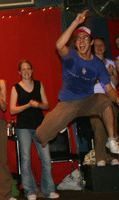
Saturday 3-5pm. Afternoon tea dance. DJ. Spiegeltent. $10.
Saturday 8.30-midnight. Strutters’ Ball. JW Swing Orchestra, Coppin Hall Prahran.$28.
Saturday midnight – 6am. Jumpin at the Woodside and The Sugar Bowl (lindy/blues). 6+ DJs, 2 rooms. Forever Dance. $10.
Sunday 2:00-5:30pm. MLX6 picnic. Fitzroy Gardens.
Sunday 1:00-3:00. B# Big Band at Copacobana, Collingwood. $10.

Sunday 7:00-10:00pm. Flying Home Dance with Mike McQuaid’s Red Hot Rhythmakers. Forever Dance. $20.
Sunday 10:00-late. Jumpin’ at the Woodside. Hundreds of DJs. 2 rooms, Forever Dance. $10.
If you’ve bought a pass, it’ll all cost you only $60.
Now, my program for the weekend is as above, just add in:
Friday 2:00-7:00pm. Set up at Forever Dance.
Thursday 7.30pm. Volunteer meeting.
And then add in the fact that I’m DJing at the Spiegeltent that first Thursday, and I’m running the late nights (with wonderful Keith). I’m also expecting to be there to help Wendy on Thursday night, and at every event over the weekend I’ll be hanging around for the other organisers when they need me (we’ve divided up all the events between us).
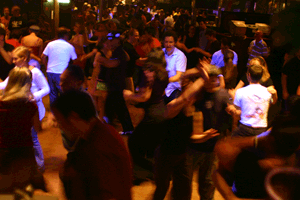
We have about 100-odd people flying in from interstate and overseas, and millions of local coming.
I am coordinating our 10 wonderful DJs and 25 fabulous volunteers.
I will have 3 houseguests (Perth, San Diego and Tasmania, Representing) and 1 Squeeze to play with. It will be a massive weekend (it always is), but now that I’ve finished my marking (as of yesterday!), my extreme anxiety has disappeared, and I feel like it’s Christmas eve.

The temperature has dropped to the very pleasant mid-20s and my guests are flying in tonight. I’m really looking forward to the weekend!
[NB all these photos are from The Squeeze‘s collection. They used to be there at his flickr account, but I suspect he’s lost his uber priveleges, hence their unsee-able-ness. Btw, I reccommend those Pnlrland pics – they are work safe. Wearing bright orange vests and all.]
FIVE STEPS A SECOND
Feeling a little tired, finding it difficult to concentrate?
Sounds like you have
Marking fatigue
Take one of these and call me in the morning.
Coming in at 275bpm (or thereabouts), this fast finals of the Ultimate Lindy Hop Showdown comp for 2006 is fricking fast. At one point one couple dances in half-time, then shifts back to full-time (French wunderkind Max and Alice – in black shirt and jeans/black dress), and they look like a film speeded up when they make that shift.
To give you an idea of how fast 275bpm is (if you can’t be arsed going and looking and listening), we’re talking about 5 steps a second. FIVE STEPS A SECOND. Can you even run that fast, let alone dance that fast?
When Max and his partner dance half time, they’re dancing at about 137bpm. 140 is an average tempo in Melbourne atm (though it should be 160 at least).
I guess I don’t need to explain why I needed to get back in shape for MLX6, huh?
The first couple in that clip are Frida and Todd Yanacocmamancobi (?). He’s about 12 and she’s about 16. Well, actually, she’s about 22 and he’s about 20. He gets better and better and better each time I see him dance. Frida still blows my brain – I have yet to see a young lindy hopper who’s better. We have no dancers in Australia who can dance at the standard of these guys.
If you’re interested, the winners are Ria and Nick (she’s wearing a short, shiny red skirt and he’s wearing a red shirt), second place was taken by Frida and Todd and third by Max and Alice.
The Charleston Chasers
 The Charleston Chasers (self-titled).
The Charleston Chasers (self-titled).
Not the modern-day recreationist Charleston Chasers, but the early days doods from the 20s/30s.
Only existing as a studio-group (ie recording together but not performing live for audiences), the Charleston Chasers feature a pretty white cast of musicians (and sound it too), including Glenn Miller, Benny Goodman, Pee Wee Russell, Tommy and Jimmy Dorsey, Gene Krupa, Jack Teagarden. Goodman was the focus of my interest in this album.
I haven’t really had a chance to listen to the album properly, but I can say, the quality is surprisingly good for such old recordings, the ‘sound’ is pretty dang white (check out that above link for a discussion of this stuff in one of my earlier posts), but the music is still good stuff. Think ‘charleston’, a few slow drags/blues numbers, all with a bit of a ‘society’ edge (no guts, no buckets here).
Considering the cast on this one, I think my appreciation for this album will only grow over listens.
Maxine Sullivan’s My Memories of You

Maxine Sullivan’s 1955 album My Memories of You (remastered, etc) is very like Ella’s These are the Blues in its groovy, later-era swinging jazz vibe. I’d pop this one in the same family as Ella and Louis Again (Ella and Louis Armstrong), Billy Holiday’s later stuff from Verve (including Songs for Distingue Lovers) and some of the Oscar Peterson/late Louis Armstong All-Stars stuff.
Small combo, sweet production, older artist with a less-excellent voice, but nice phrasing and sophisticated musicianship. You have to love the way these ladies hang on the beat – they just wait out there til the very last minute.
My Memories of You is a really nice album – almost all very danceable/DJable (for a groover crowd, mind you), as I discovered at the Spiegeltent this weekend. I played far too many songs from the album, but it was just so appropriate for the dancers who were there – a version of Massachusetts which went down really well as a birthday song (and I like it because it reminds me of her much earlier version which I really prefer), as did Christopher Columbus which doesn’t really hold up to too many replayings, but has a sweet sparcity and velvety sauciness which plays on the memory of Fats Waller’s (decidedly dirty) version in a nice way.
Max manages to avoid the dirty lyrics, but their absense (if you know the Fats version) is emphasised rather than coyly ignored (as in the horrible Andrews Sisters versions of things like Hold Tight), so ends up feeling saucy – the delay in her phrasing, while not a patch on Billy Holiday, seems to let you know that she knows this is saucy stuff, but won’t go so far as to piss of her record company with dirty lyrics.
This is a nice album. I’ve listened to it a bunch of times, and I know it’ll be a sure-fire winner when DJing for groovers. But after about a half-dozen, or maybe 10 times through, I feel like I’ve pretty much heard all there is to hear. Unlike Billy Holiday’s later stuff, where you feel you can keep going back and finding more interesting things. Max isn’t the consumate muisican Billy is. Nor has her voice weathered as well as Ella’s in that period. But there’s something really appealing about this mature voice with a mature approach to swing.
[NB: I heard Jesse spruiking this one on his radio show and made an immediate impulse purchase. It’s a damn good thing I really don’t like Earnestine Anderson or I’d have spent my (non-existant) savings on groover crowd-pleasers by now)]
Ella Fitzgerald’s These are the Blues
Just a quick entry to blog the lately arrived members of my CD collection.

These Are the Blues by Ella Fitzgerald.
Ella really rocks, and this is a really great album. One of the late-Ella recordings (1963), there’s some sweet organ action, some lovely solos, etc etc from the combo supporting her (I don’t have the linter notes handy, sorry – story of my laptop-life). It’s all blues, and it’s all very blues-danceable.
Yet I am not entirely convinced that Ella really knows how to sing anything other than happy. She has an amazing voice, amazing musicianship, but it feels like she has a limited emotional range. Listening to a version of Christopher Columbus on another album last night, I speculated to The Squeeze that Ella could sing the naughty version of that song have it come off sounding entirely innocent.
But this is still a great album – truly great. If you like groovy, smooth blues. And Ella, of course.
Hamp & slow-mid range swing
 My love for Lionel Hampton continues in an unnatural way*. Unnatural in that I have not only abandoned my qualms about DJing jump blues for lindy hoppers for Hamp’s sake, but in that I have also decided that boogie woogie is Fun. I have also (quite unashamedly) overplayed my favourite Hamp songs (eventually, I guess, I will tire of songs like Drinkin’ Wine spo-de-oh-doh, Hey ba-ba-re-bop! and Lavender Coffin (yes, despite all evidence to the contrary, they are actually different songs)) and will continue to do so.
My love for Lionel Hampton continues in an unnatural way*. Unnatural in that I have not only abandoned my qualms about DJing jump blues for lindy hoppers for Hamp’s sake, but in that I have also decided that boogie woogie is Fun. I have also (quite unashamedly) overplayed my favourite Hamp songs (eventually, I guess, I will tire of songs like Drinkin’ Wine spo-de-oh-doh, Hey ba-ba-re-bop! and Lavender Coffin (yes, despite all evidence to the contrary, they are actually different songs)) and will continue to do so.
I think my love for Benny Goodman’s small groups is in part (perhaps a large part) owing to my love of the Hamp.
Right now, I am declaring a love for Don’t be that way (you can hear it here). I have already played it far too many times, and will continue to do so. I just love the way it chuggs along. And you get the feeling that there’s some joking going on in the band there. I love the saucy brass with the brruurp brruurp trombone underneath. I love the twinkly vibes. I love the chunky beat (bass, guitar esp). I even love the sax (and really, who could love sax?). I love the restrained, but kind of bursting-at-the-seams feeling of momentum building. It’s only 137bpm, but it feels like it’s going somewhere.** It feels like… like… like bounce feels – like energy stored in your body, that might bust out any old how.
This brings me to a comment another dancer made the other day. After I’d just played a set of old scratchies that were all between 120 and 167 at a sedate after-class gig.
The comment involved these points:
– I wish that guitar would move away from the microphone. It’s so dull – clunk, clunk, clunk
– that older clunky music sucks when it’s under 180 – it’s really boring.
I didn’t really lay much value on these observations.But it made me think a lot about the issue (of course). And here are the things I came up with:
– that slower stuff sounds dull if you’re looking for tinkly, complex melodies and delayed timing, a la Oscar Peterson. But if you’re into combining moves, and working with phrases as the markers for your complexity (ie, working on a larger scale), or perhaps looking at the layers of sound only a big band can offer, and which are clear markers of that earlier, late 30s sound, then this stuff is quite interesting. It begs a combination of moves and a use of lateral or horizontal space, rather than micro-movements on the spot. It says ‘think of each note or each beat or each chunk of rhythm as part of a bigger pattern’ not ‘think of each note or beat or chunk of rhythm as something you have to echo in your body exactly’.
The free-er, riff-based and improvisation-heavy nature of Kansas City jazz (in particular) encourages musicians to think of how they can combine improvisations and solos within a looser musical framework. For dancers, that approach encourages contributions to the rhythms going on, rather than a strict representation of what they can hear. So, for example, a Swede would add a bit of syncopated footwork at the end of an 8 to add rhythm to the song, rather than simply making flesh exactly what they can hear. They would also make greater use of a dynamic, lateral energy rather than just a restrained, micro-movement and energy-contained.
So, really, this stuff is actually very interesting and challenging for dancing. Even at slower tempos. I actually feel that slower tempos can offer greater scope for improvisation and interest – you have time to add stuff in. When you’re moving to 200bpm, you don’t have time to add in extras – you pare down the movement to basic moves simply because you don’t have time. It’s about combinations of moves rather than individual movements.
When you’re working at a slower tempo, you can add in all the interesting visual ‘commentaries’ and social interaction that faster tempos prevent. And if you’re working with the more open, improvised connection of a Swedish or old skool swingout, for example, both partners can happily add in variations and jazz steps, breaking out into open to do ‘solo’ stuff as well. And all that in addition to the combinations of moves and use of lateral space that says ‘hey, I can hear more of this song than just the three or four notes in my immediate vicinity’.
I also find that phrasing becomes more important with this sort of music – you work in combinations of 8s rather than within an 8 for variation and interpretation and improvisation.
So my love of the mid/slower tempo chunk-chunk songs by people like Lionel Hampton run in the face of arguments challenging their aural interest. But I must admit – 120 is the lowest I’ll go in that style, and really, it’s better if it hits 140.
*a love that will never be realised as this fan’s was here
**a lot like the slower version of Flying Home that’s about – it builds to a frenzy of almost-fastness. It’s at least 20bpm slower than the version most dancers know.
